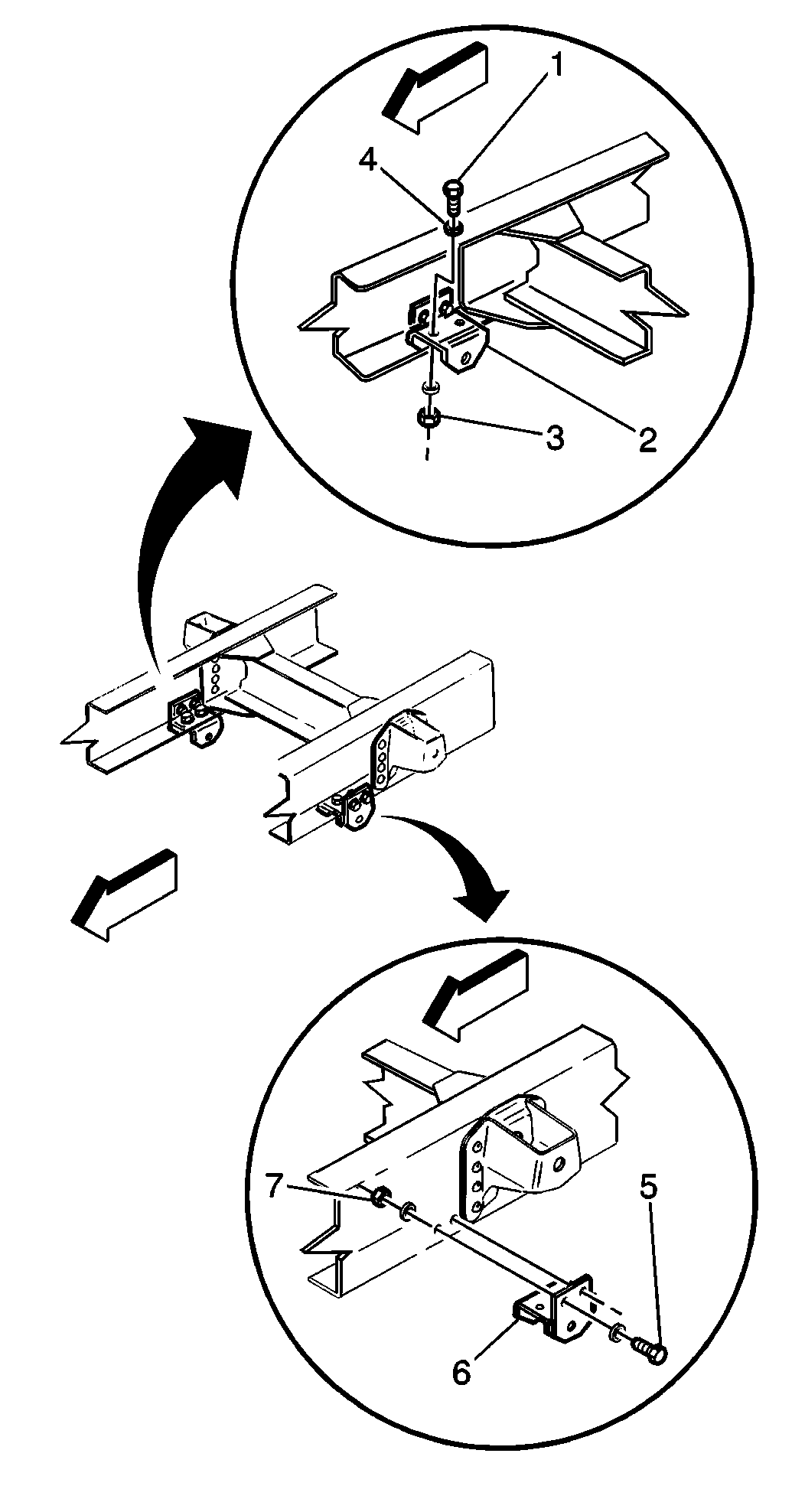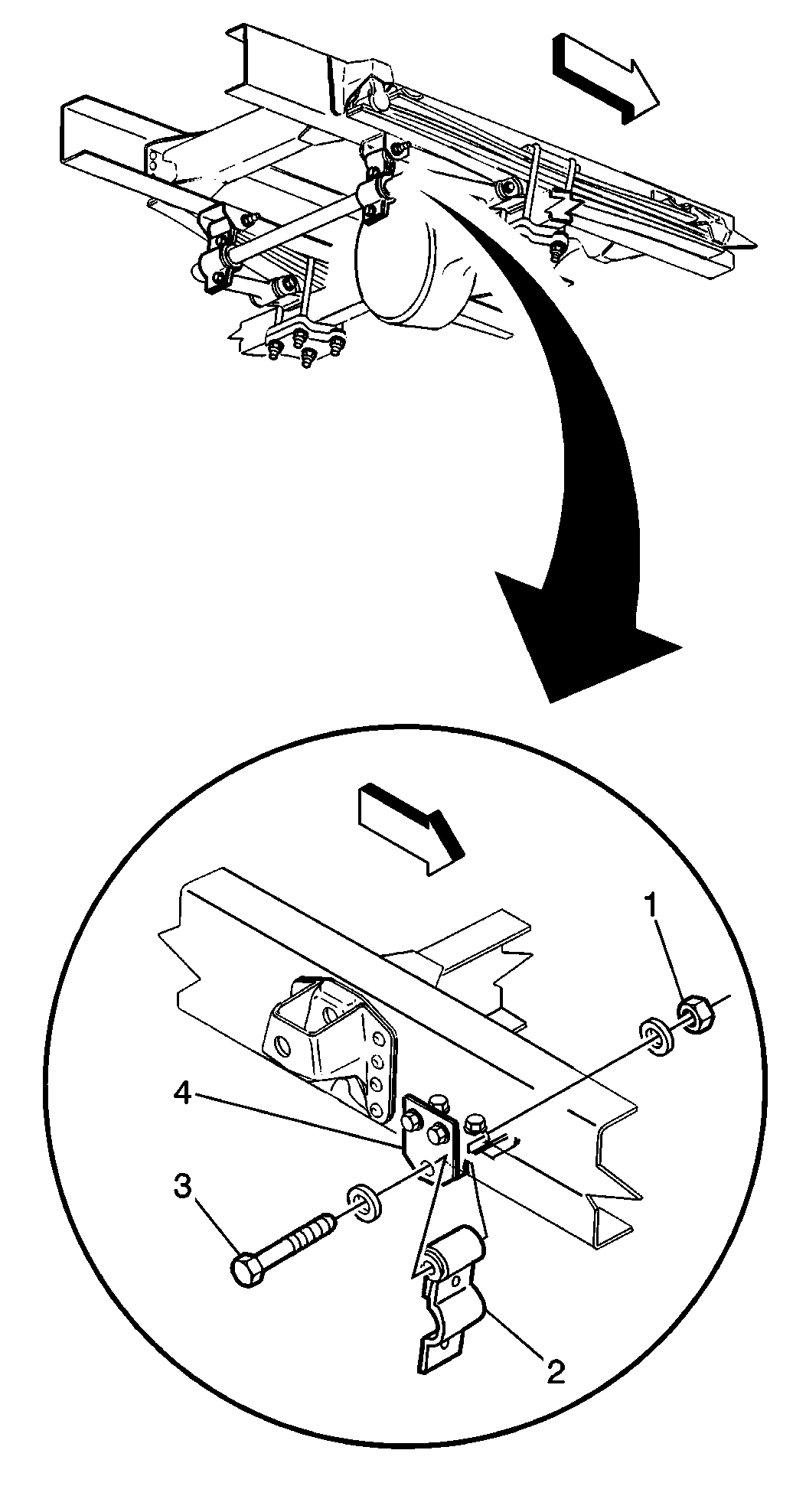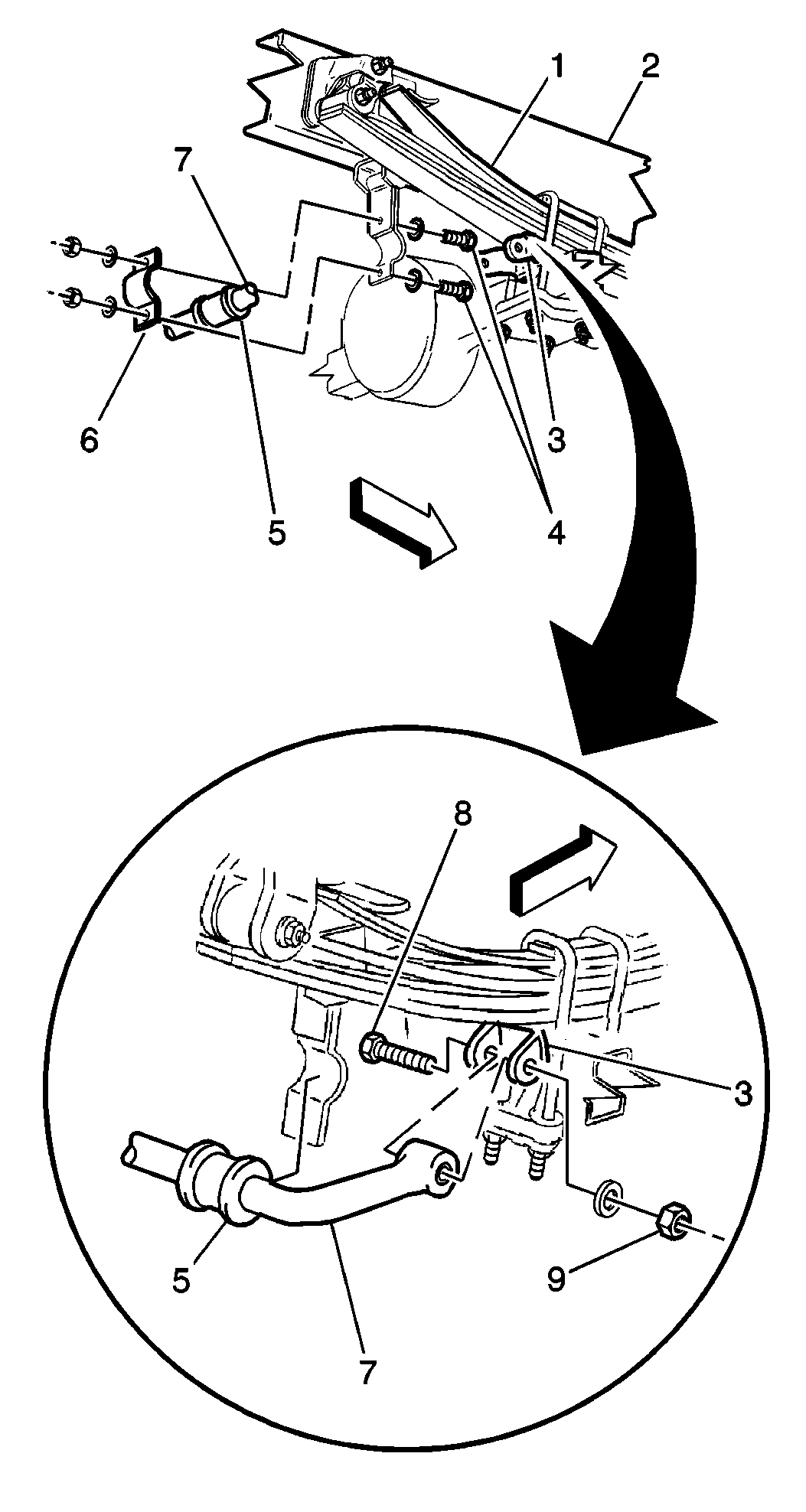
Notice: Use the correct fastener in the correct location. Replacement fasteners
must be the correct part number for that application. Fasteners requiring
replacement or fasteners requiring the use of thread locking compound or sealant
are identified in the service procedure. Do not use paints, lubricants, or
corrosion inhibitors on fasteners or fastener joint surfaces unless specified.
These coatings affect fastener torque and joint clamping force and may damage
the fastener. Use the correct tightening sequence and specifications when
installing fasteners in order to avoid damage to parts and systems.
Important: If the stabilizer brackets require replacement, perform the first two
steps.
- Install the following components to the side member:
| • | The stabilizer bracket (2,6) |
| • | The stabilizer bracket nuts (3,7) |
Tighten
Tighten the stabilizer bracket nut to 70 N·m (52 lb ft).

- Install the following components:
| • | The stabilizer link (2) to the stabilizer bracket (4) |
| • | The stabilizer link bolts (3) |
Tighten
Tighten the stabilizer link nut to 240 N·m (177 lb ft).
- Install the stabilizer insulator on the stabilizer shaft.

- Install the stabilizer shaft (7) to the stabilizer
bracket/spring seats (3).
- Install the following components on the stabilizer shaft and the
stabilizer bracket/spring seats:
| • | The stabilizer shaft bolts (8) |
Tighten
Tighten the stabilizer shaft nut to 240 N·m (177 lb ft).
- Install the following components on the stabilizer links:
| • | The stabilizer clamps (6) |
Tighten
Tighten the stabilizer clamp nut to 220 N·m (162 lb ft).






